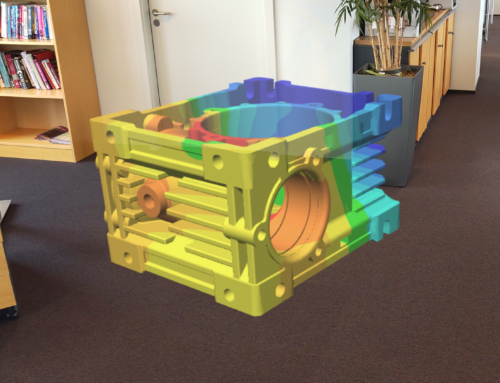(09.03.2020) Sophia Antipolis, France
Those of you who follow us on social networks know that a few weeks ago, all of Ceetron gathered in Copenhagen for our 2020 strategy kick-off meeting. We strongly believe that putting all our brains on the table together is the right way to review where we stand and set the path for the coming months. The other option is leaving all this to myself. If you know anything about my colleagues, you will understand that I’m not into taking that kind of risk.
Well, our brains survived Copenhagen. That’s the first good piece of news – at least for us. The next best thing that came out of our work sessions (and after-work sessions I must admit), is a clear-cut roadmap of our development activities you will benefit from in 2020.
So, what’s in it for all of you CAE visualization developers and end-users ? As Copenhagen saw me named Chief Dining Officer (CDO) on top of my usual Chief Technical Officer (CTO) responsibility … here is the menu.
Starter: “Soufflé of mixed realities in the Cloud (or not)”
Both our Desktop and Cloud Components SDKs will include support for XR (i.e. AR / VR). We are closely monitoring the emergence of WebXR (browser-based extended reality) and will integrate its cool capabilities to Cloud Components as soon as reasonably stabilized.
Main course : “Collaboration in a browser à la Norvégienne and a mini Analyzer revamp”
You can expect to see collaboration features popping up both in our end-user sharing portals (Ceetron Cloud and Cloud Private) and our development SDK (C3 – Ceetron Cloud Components). Our idea of collaboration means being able to synchronously analyze CAE results from multiple remote locations. In a browser. One meeting, a presenter, participants, all working together on the same project, being able to add notes, store views and share a common persistent analysis of the simulated results.
Analyzer Cloud will go through a back-end refactoring : we have decided to move all our web UI development to Angular. For us, it’s a logical move towards a unified platform. For you, this means 1) a modular version of Analyzer Cloud to kick-start your custom browser-based post-processor (yes, Cloud Components users will have access to the Analyzer source code) and 2) a closer synchronization of feature sets across the Desktop and Cloud versions of Analyzer.
Speaking of feature sets, the next version of Analyzer will introduce multiple views and model superimposition.
Dessert: “Sweet reporting served on a bed of Python”
Over the years, Ceetron has developed a good knowledge of the reporting needs of the CAE community. Everyone dreams of automated custom reports and this should be the goal of any solution put on the market. Ten years after our first reporting product, we will be revisiting the whole system and integrating both our own new technology (Components) and the new standard when it comes to automating engineering workflows (Python). The output : a simulation-engineer-oriented Python module to easily design custom reports built on our Components data model. You never know of course, but this is a promising new bet in the reporting area of computer-aided engineering.
Bon appétit !
Fredrik Viken, CTO (and CDO)







Leave A Comment
You must be logged in to post a comment.